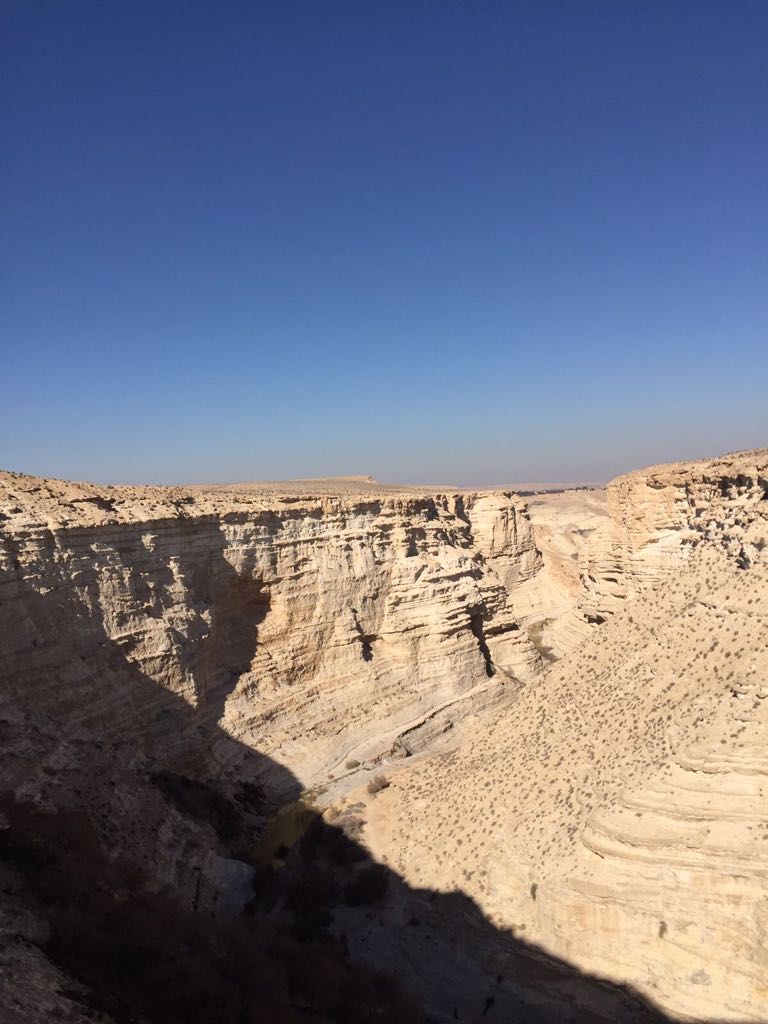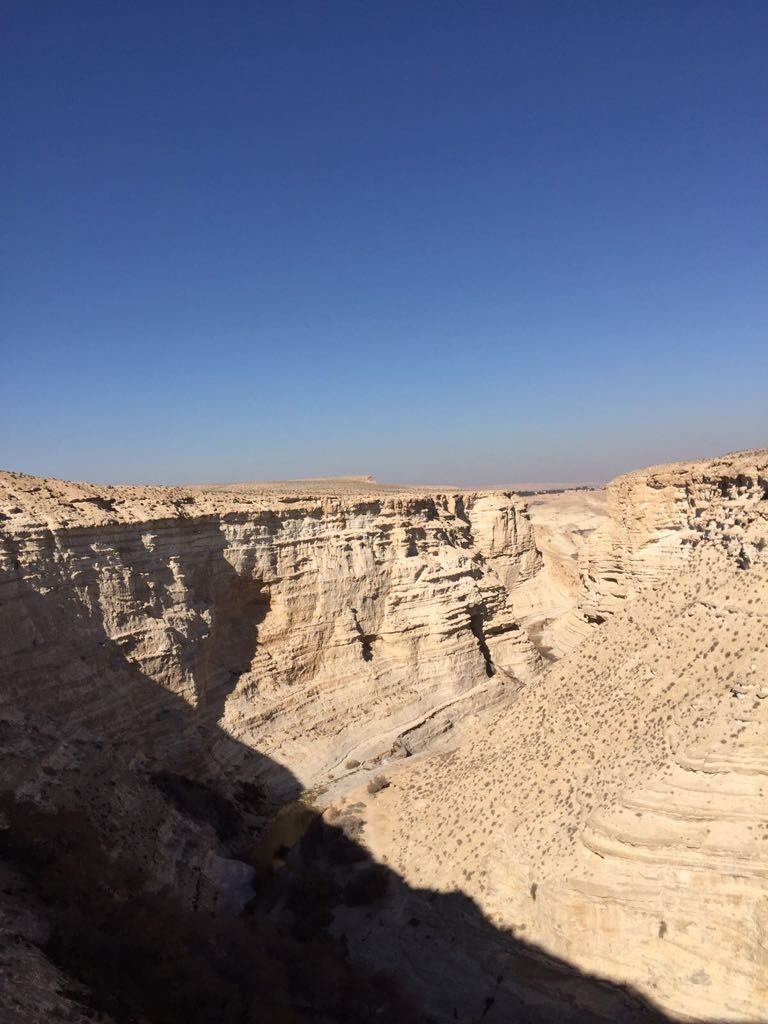
10 May 2018 Parshas Behar & Yom Yerushalayim: A Unique Land
 In this week’s parsha, Parshas Behar, the Torah commands us regarding the Shemitta year, the seventh Sabbatical year wherein the land of Israel lies fallow, its bounty permitted to man and animal alike. At the culmination of seven Shemitta cycles, with the 49th year a Shemitta year, and the 50th year the Yovel (Jubilee) year, all the laws of Shemitta are in effect, in addition to further laws regarding the return of slaves, as well as land to its ancestral heritage.
In this week’s parsha, Parshas Behar, the Torah commands us regarding the Shemitta year, the seventh Sabbatical year wherein the land of Israel lies fallow, its bounty permitted to man and animal alike. At the culmination of seven Shemitta cycles, with the 49th year a Shemitta year, and the 50th year the Yovel (Jubilee) year, all the laws of Shemitta are in effect, in addition to further laws regarding the return of slaves, as well as land to its ancestral heritage.
The primary and ultimate lessons of the Shemitta and Yovel years are: (1) Nothing belongs to us forever. G-d is the Master, Owner, Director and Overseer of all – man, animal and land alike. (2) The observance of these years of rest require a great measure of faith and trust, emunah and bitachon, in the Creator and Sustainer. While we sit idly by as the land rests, we believe that surely Hashem will provide sustenance for the 6th year (the final year of work in the Shemitta cycle), the 7th Shemitta year, and the 8th (or 1st) year, when the cycle begins all over again.
R’ Soloveitchik teaches, “שַׁבַּת שַׁבָּתוֹן יִהְיֶה לָאָרֶץ–שַׁבָּת, לַה – the land shall have a complete rest, a Shabbos to Hashem (Vayikra 25:4). The idea behind Shemitta and Yovel is that man does not truly own anything. The use of the term Shabbos for both the seventh day and for the seventh year is not coincidental. What is the common motif? To keep Shabbos is to bear witness that G-d is the Creator. Man professes faith that He is the Creator, not in the homiletical sense, but in halachic terms…Shemitta is a restoration of the authority of G-d, and the proclamation of G-d as the Creator and the Maker…
“Shemitta is referred to as a Shabbos because, like Shabbos, it is a day of surrender. Shabbos, Shemitta and Yovel all involve surrender of authority to the true Owner” (Chumash Masores HaRav, Vayikra, p.205-207).
In addition to the lessons of surrender of ownership and faith, from the Shemitta and Yovel years we learn of the special character and uniqueness of Eretz Yisrael.
The pasuk (verse) says: דַּבֵּר אֶל-בְּנֵי יִשְׂרָאֵל, וְאָמַרְתָּ אֲלֵהֶם, כִּי תָבֹאוּ אֶל-הָאָרֶץ, אֲשֶׁר אֲנִי נֹתֵן לָכֶם וְשָׁבְתָה הָאָרֶץ, שַׁבָּת לַה – Speak to the Children of Israel and say to them: When you come to the Land that I am giving you, the land shall rest a Shabbos to Hashem (Vayikra 25:2).
R’ Soloveitchik teaches, “The Torah speaks of a land ‘defiled’ and of a land ‘resting’ and ‘observing its sabbatical years.’ The Land of Israel possesses a distinct personality. It is likened to a human being who can be defiled, can be sanctified, can rest and can be appeased. Just as a Jew observes Shabbos once a week, the Land of Israel observes Shabbos once every seven years. In this way, the Land of Israel takes on human dimensions…” (Chumash Masores HaRav, Vayikra, p.205).
This coming Sunday, 28 Iyar/May 13, is Yom Yerushalayim – the day which commemorates Jerusalem’s reunification in 1967, during the miraculous Six Day War.
The very entity of Eretz Yisrael and Yerushalayim Ir Ha’Kodesh teach us that all belongs to Hashem. As the very first Rashi on Torah teaches us: the land belongs to Hashem. He created it and gives it to whom He pleases, when He pleases.
The land and its cycles of growth, work and rest, teach us about faith in G-d. He can, and will, provide for us at all times – when we work the land and when we allow the land to rest, as is Biblically mandated.
And finally, kedushas ha’Aretz (sanctity of the Land) reminds us that there is no other land like Eretz Yisrael. As the chosen land for the chosen people, she is a land that is alive – with produce, animals, nature, people, holiness, vibrancy and great depth.
יְרוּשָׁלִַם הָרִים, סָבִיב לָהּ – Just as mountains surround Jerusalem; וַה’ סָבִיב לְעַמּוֹ מֵעַתָּה, וְעַד-עוֹלָם, so too, Hashem surrounds His nation, from now until forever (Tehillim 125:2).
R’ Avraham Yitzchak Ha’Kohen Kook zt’l once taught: “The Gemara states: R’ Abba used to kiss the boulders of Akko (Kesuvos 112a). What was so special about these boulders, and why did R’ Abba kiss them, as opposed to the ground itself?
“R’ Kook explained: Had R’ Abba kissed clods of dirt, we might have thought that he did so because dirt yields fruits; and we might have concluded that the significance and sanctity of Eretz Yisrael is contingent upon the land-related precepts (like terumos and maasros – lit. ‘a tenth’ and ‘separations’ of the produce of the Land). To avoid such a misconception, R’ Abba kissed the boulders, which are incapable of producing fruits. This demonstrated that his love for Eretz Yisrael was unconditional, and that the sanctity of the Land is independent of any external factor” (An Angel Among Men, p.272).
Miriam Peretz writes of her journey from Morocco to the land of Israel when she was a young girl, “…And on the distant horizon we caught a glimpse of land – Haifa.
“The boat shook with cries of joy. Endless ululations. Mother covered her hair with a colorful embroidered Moroccan scarf, and Father disembarked in his elegant jalabiya. He was standing straight, his head held high as he descended from the boat. Then suddenly I saw him fall. Father, what’s wrong? Then I saw that my father wasn’t the only one lying down. All the men were bowing, bending, lying flat on the ground. And kissing. Father, what you are kissing? ‘I am kissing the earth of the Holy Land!’ Father exclaimed. ‘Dialna (it is ours) – he said, his voice choked (with emotion)…” (Miriam’s Song, p.13)
May we merit the ultimate, everlasting and peaceful redemption, as the promise of Dovid Melech Yisrael (King David) materializes in our day and in our time:
הָ֘ל֚וֹךְ יֵלֵ֨ךְ וּבָכֹה֘ נֹשֵׂ֪א מֶֽשֶׁךְ־הַ֫זָּ֥רַע בֹּֽא־יָבֹ֥א בְרִנָּ֑ה נֹ֜שֵׂ֗א אֲלֻמֹּתָֽיו – He will go along weeping, carrying the valuable seeds; he will come back with song, carrying his sheaves (Tehillim 127:6).
בברכת חדש טוב, בשורות טובות, ושבת שלום
Michal



Sorry, the comment form is closed at this time.